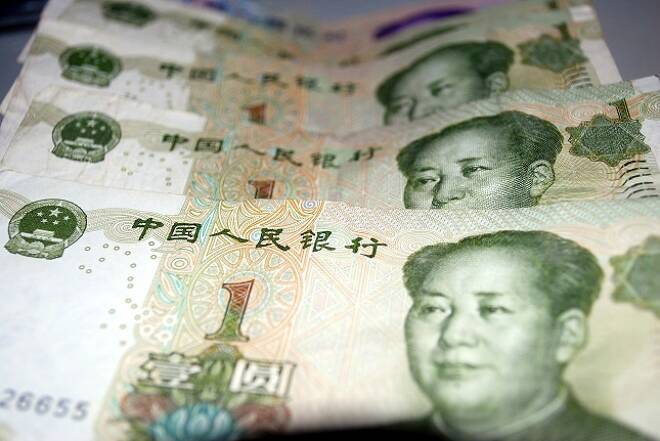Advertisement
Advertisement
FX Traders Monitoring Yuan after PBOC Makes Moves to Attract Foreign Investors
By:
On Friday, the onshore spot Yuan rate ended at a 17-month high on Friday against the U.S. Dollar, its biggest one-day percentage gain since 2005.
Investors are monitoring China’s Yuan movements on Monday after the People’s Bank of China (PBOC) announced a rule change that made it cheaper to short the national currency.
Traders short the Yuan when they expect the currency to weaken in the future. One way to do so is to borrow in Yuan in hopes of buying it back at a lower price later and pocketing the difference.
In the Monday morning trade, the onshore Yuan changed hands at 6.7224 per dollar, as compared to levels below 6.7 against the greenback seen last week. Meanwhile, its offshore counterpart last traded at 6.7188 per dollar. The price action in the currency was directly influenced by the rule change, “which makes it less expensive to short the (Chinese Yuan) and signals less (concern) about currency weakness,” said National Australia Bank’s Tapas Strickland.
China’s Central Bank to Cut FX Risk Reserve Ratio to Zero
China’s central bank said it will lower the reserve requirement ratio for financial institutions when conducting some foreign exchange forwards trading to zero with effect from Monday.
Under current rules, financial institutions must set aside 20% of the previous month’s Yuan forwards settlement amount as foreign exchange risk reserves.
“The People’s Bank of China (PBOC) will continue to maintain flexibility in the exchange rate, stabilize market expectations, and keep the Yuan basically stable at reasonable and balanced levels,” the central bank said on its website.
The move came after the onshore spot Yuan rate ended at a 17-month high on Friday against the dollar, its biggest one-day percentage gain since 2005.
Policymakers Want to Open Up Domestic Financial Markets to Foreign Investors
Tommy Xie, economist at OCBC Bank in Singapore, said the PBOC’s move could serve to keep the Yuan’s appreciation in check, and that is also reinforced how policymakers are keen to open up domestic financial markets to foreign investors.
“It is the exit of intervention, which marks the further step for RMB to move towards market driven pricing mechanism,” Xie said, referring to the renminbi, or Yuan.
“By removing the restrictions on derivatives, it will create a more flexible (hedging) environment for foreign investors.”
Chinese Officials Worried About Yuan Appreciation Ahead of US Presidential Election
Ken Cheung, chief Asian FX strategist at Mizuho Bank in Hong Kong, said the PBOC’s move was not meant to reverse the Yuan’s rising trend, but had come earlier than he expected.
“The authorities might be worried about Yuan appreciation risk driven by the U.S. presidential election,” he said.
On Friday, the onshore spot Yuan rate ended at a 17-month high on Friday against the U.S. Dollar, its biggest one-day percentage gain since 2005.
Friday’s gains in the Yuan were largely prompted by speculation that Democrat challenger Joe Biden might win the U.S. presidency and improving Sino-U.S. relations.
For a look at all of today’s economic events, check out our economic calendar.
About the Author
James Hyerczykauthor
James Hyerczyk is a U.S. based seasoned technical analyst and educator with over 40 years of experience in market analysis and trading, specializing in chart patterns and price movement. He is the author of two books on technical analysis and has a background in both futures and stock markets.
Advertisement
